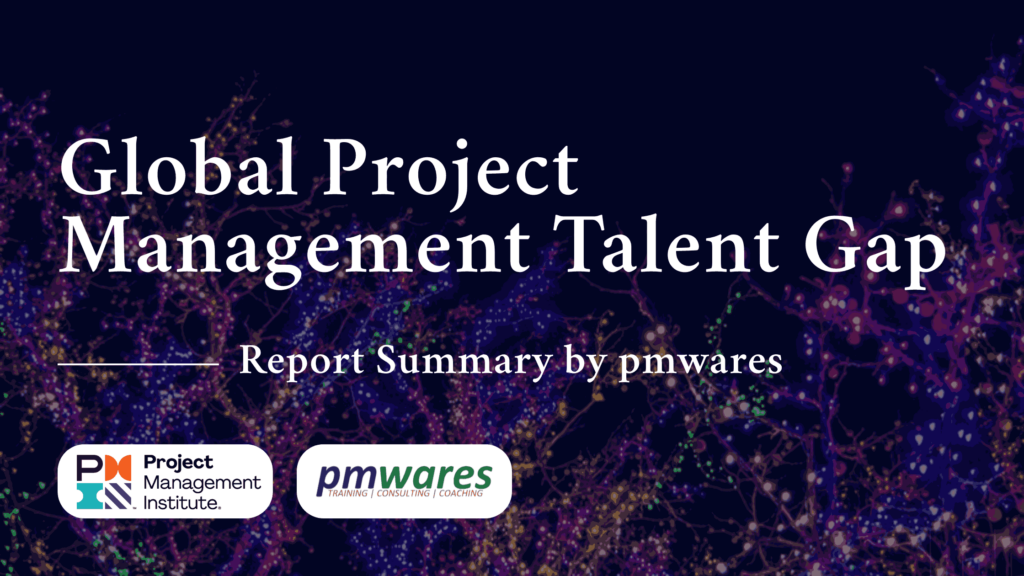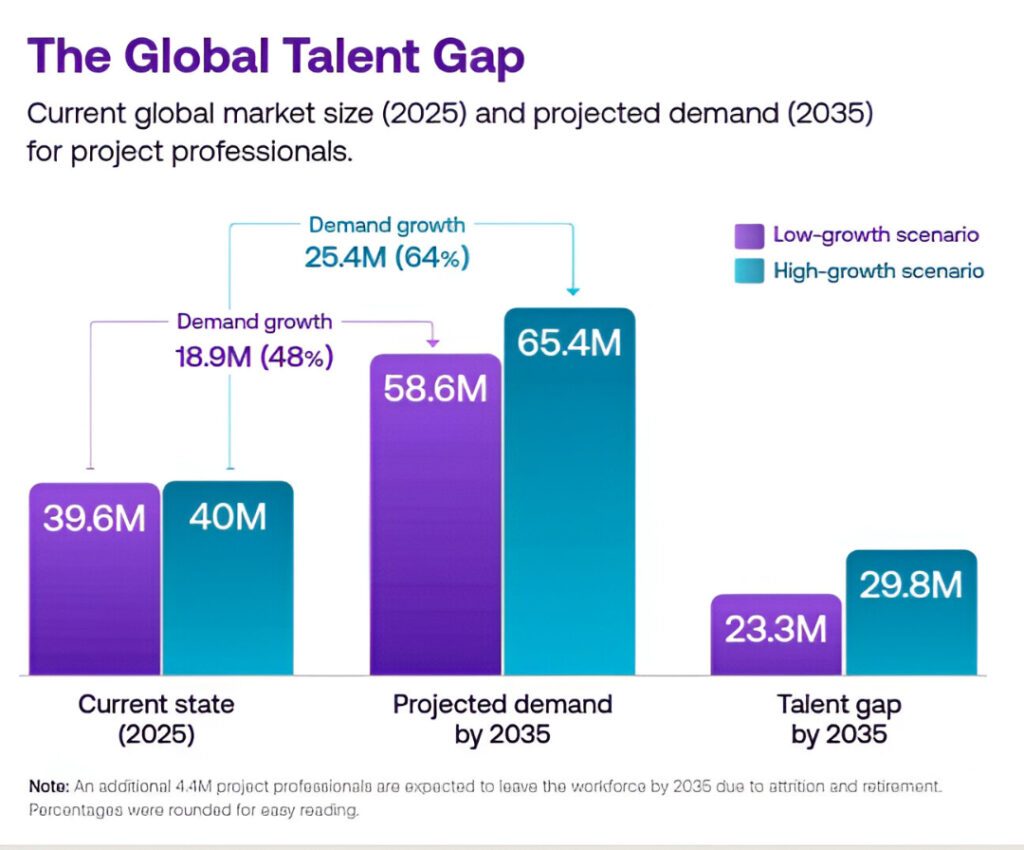The Global Project Management Talent Gap Report 2025 by PMI – Summary & Key Insights

The Global Project Management Talent Gap report by the Project Management Institute (PMI) highlights the critical and growing demand for skilled project professionals worldwide. In an era of increasing technological transformation and geopolitical shifts, project professionals plays a very important role in building organizational resilience and successful strategic execution. The report quantifies the current and future talent deficit in the project management field while identifying key growth regions and industries. It also highlights the urgent need for upskilling and reskilling to address this gap. Let’s check some key insights and data from this report.

Key Insights:
- Current Profession Size (2025): The estimated global project management profession comprises almost 40 million skilled professionals.
- Comparison to Other Professions: This size is larger than the global workforce of approximately 25 million software developers.
- Projected Demand (2035): Organizations could require up to 65 million project professionals by 2035 to keep pace with growth and change.
- Projected Talent Gap (2035): The supply of qualified talent is projected to fall short by as many as 29.8 million project professionals over the next decade.
- Low-Growth Scenario (2035): In a conservative scenario, the global project management workforce is expected to grow from 39.6 million in 2025 to 58.5 million in 2035, a 48% increase.
- High-Growth Scenario (2035): In an aggressive scenario, the talent gap could reach nearly 30 million project professionals by 2035, representing a 64% increase in demand over 2025.
- Attrition and Retirements (2035): An estimated 4.4 million project professionals are expected to leave the workforce by 2035 due to attrition and retirement.
- Regional Demand Growth – China (High-Growth): China’s project talent pool may need to more than double, from 11.1 million to 23.3 million by 2035.
- Regional Demand Growth – South Asia: South Asia could see significant demand growth of between 68% and 91% by 2035.
- Regional Talent Gap – South Asia (High-Growth): South Asia is projected to have a talent gap of 4.4 million project professionals by 2035 (high-growth scenario).
- Regional Talent Gap – Asia-Pacific (High-Growth): Asia-Pacific is projected to have a talent gap of 3.2 million project professionals by 2035 (high-growth scenario).
- Regional Talent Gap – Europe (High-Growth): Europe is projected to have a talent gap of 3.5 million project professionals by 2035 (high-growth scenario).
- Top 10 Countries for Demand Growth (Low-Growth Scenario): Ethiopia (112%), Bangladesh (86%), China (81%), Vietnam (74%), Cambodia (73%), Uzbekistan (70%), Ghana (70%), Tanzania (68%), and India (68%).
- Top 10 Countries for Number of Professionals Needed (Low-Growth Scenario): China (10.4 million), India (2.9 million), United States (1.2 million), Indonesia (0.54 million), Germany (0.52 million), Ethiopia (0.43 million), Vietnam (0.36 million), Bangladesh (0.33 million), Russian Federation (0.33 million), and Poland (0.23 million).
- Industry Demand Growth: Every project-focused industry is expected to see demand grow between 37% and 66%.
- Highest Industry Demand Growth: Construction (50%-66%) and Manufacturing (49%-65%) are projected to have the highest demand growth.
- Construction Talent Gap (High-Growth): Construction is projected to have a talent gap of 2.2 million project professionals by 2035.
- Manufacturing Talent Gap (High-Growth): Manufacturing is projected to have a talent gap of 5.4 million project professionals by 2035.
- IT Services Talent Gap (High-Growth): IT services is projected to have a talent gap of 2.8 million project professionals by 2035.
- Professional Services Talent Gap (High-Growth): Professional services is projected to have a talent gap of 3.5 million project professionals by 2035.
- Methodology: This report uses a new methodology that uses LinkedIn’s Talent Insights (LTI) platform, which summarise professional data from over a billion users worldwide.
Conclusion
The Global Project Management Talent Gap report clearly shows a significant and growing demand for project professionals globally which is also outpacing the current supply. This talent deficit comes as a considerable risk to business performance but also presents a unique opportunity to elevate the project management profession. Addressing this gap requires effort from project professionals themselves to adopt a strategic mindset from organizations to invest in upskilling and reskilling initiatives and from PMI to continue its efforts in education, certification and community building. By working together the global workforce can be prepared to lead the critical projects that will shape the next decade and beyond.
You can check out the full report by PMI here.